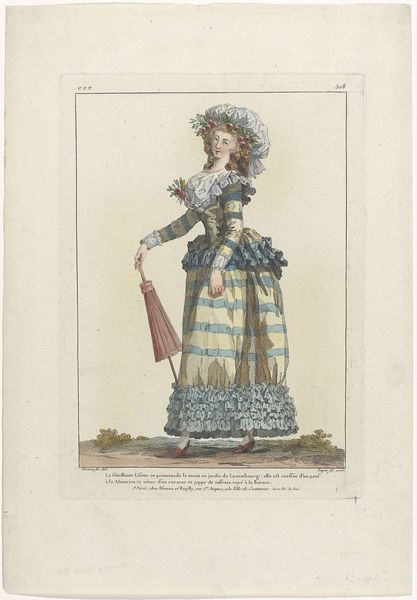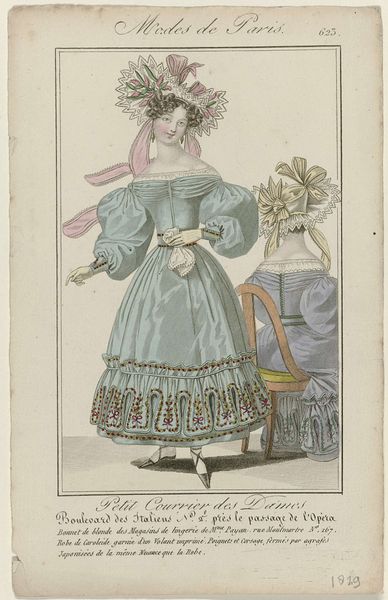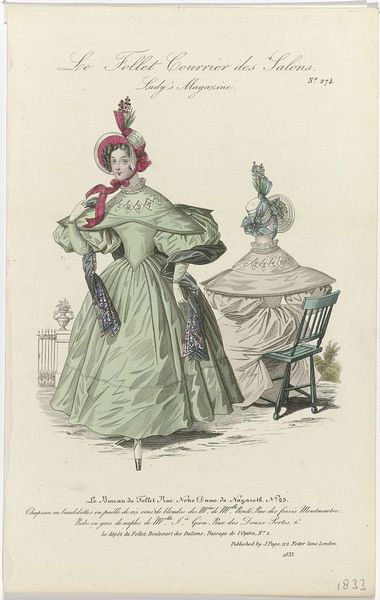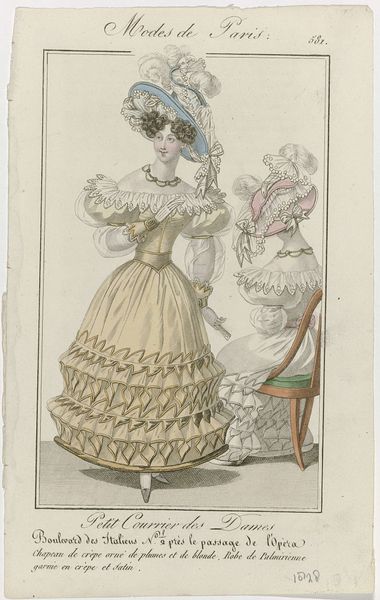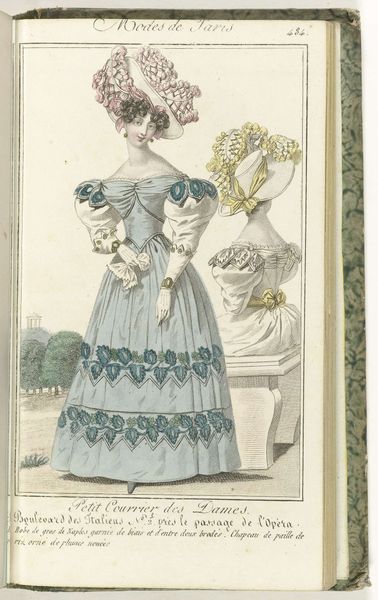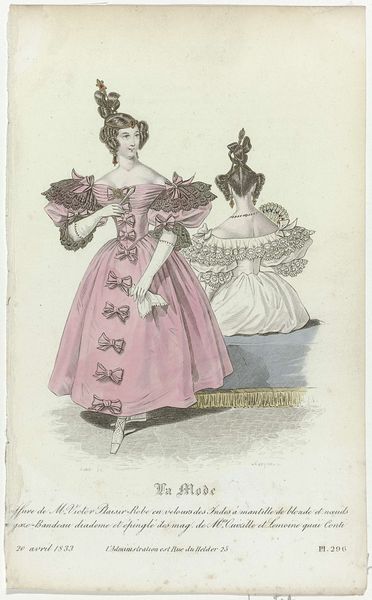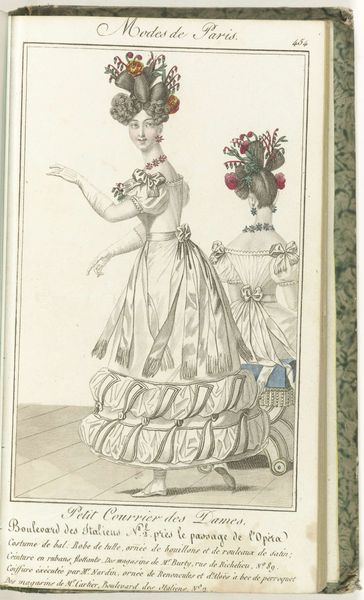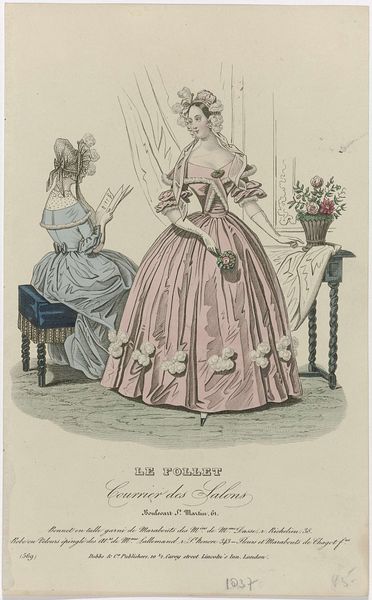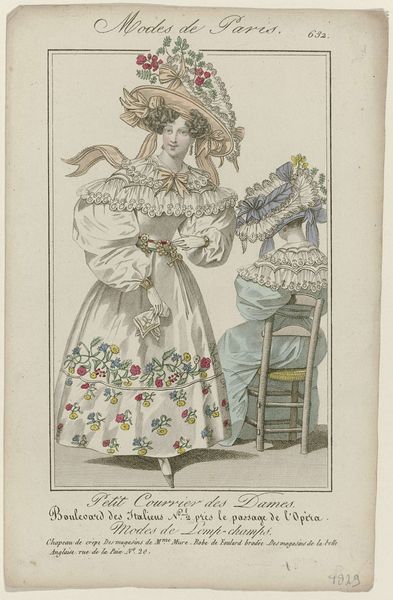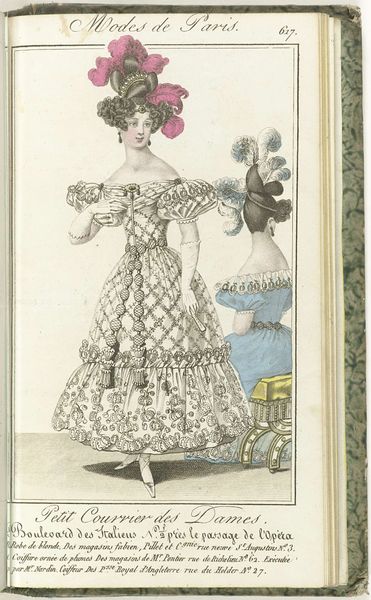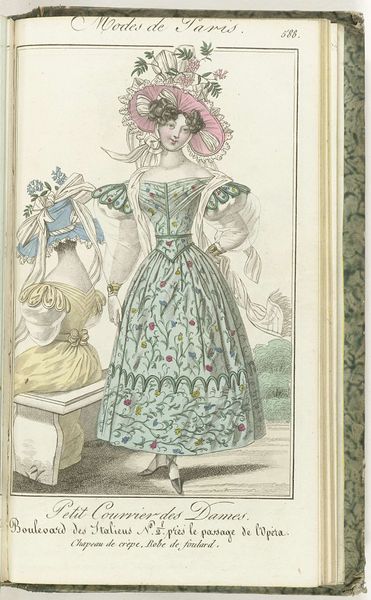
drawing, print
#
portrait
#
drawing
#
art-nouveau
# print
#
pencil sketch
#
flower
#
watercolour illustration
#
sketchbook art
#
dress
#
watercolor
Dimensions: height 381 mm, width 278 mm
Copyright: Rijks Museum: Open Domain
Editor: This is "La Magasin des Élgants, 1898, No. 2768, 523-49," a drawing by an anonymous artist. The dress designs feel very constrained and emphasize the waist... what strikes you about this piece? Curator: I see a critical commentary on the gilded cage of femininity during the Belle Époque. The emphasis on the waist, achieved through corsetry, was not merely aesthetic; it symbolized the physical and metaphorical constraints placed upon women. Editor: That's an interesting take. Could you elaborate? Curator: Consider the "Magasin des Élgants" itself – a department store. These emerging spaces offered women a limited form of agency through consumerism, while simultaneously reinforcing societal expectations of beauty and domesticity. The figure's ornate dress, while beautiful, could be interpreted as a visual representation of her restricted role. Note how the backdrop almost seems like it could be interpreted as cage bars... does this read as entrapment to you? Editor: I hadn’t thought about it that way, but I see your point. The flowers on the dress and in the background could suggest a longing for natural freedom. The dress could be a cage, yet its floral elements might also signify women's power and connection to nature. What do you make of that detail? Curator: Precisely. There’s a powerful tension there – between confinement and a subtle rebellion or reclaiming of one's agency through fashion, subtly disrupting societal norms. The very act of sketching these dresses, immortalizing them on paper, can also be interpreted as giving voice to a woman whose body has become something of a blank canvas. What a contrast, indeed. Editor: That makes me see it completely differently. I appreciate how you connected the art to societal issues and highlighted these subversive undertones within seemingly decorative details.
Comments
No comments
Be the first to comment and join the conversation on the ultimate creative platform.
